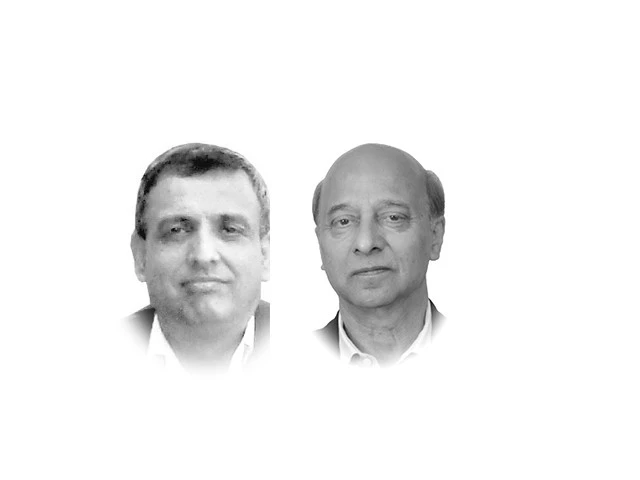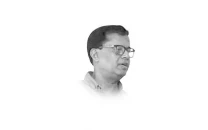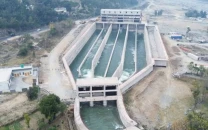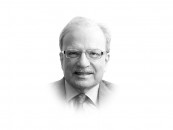Planning Commission or graveyard of fantasies
.

Over a decade after it was unveiled, the Vision 2025 today lies in tatters. It had promised an industrial revolution, driven by manufacturing, innovation and a transition to knowledge economy. With the exit of nearly two dozen foreign companies since 2022, Pakistan today faces literal de-industrialisation. The Vision 2025 was led by the chief of the Planning Commission – Ahsan Iqbal. Both watch haplessly as companies wind up businesses and industrial output decelerates because of bureaucratic incompetence, extractive policy framework and chronic macroeconomic instability.
Large-Scale Manufacturing (LSM), for example, contributed about 13.5% to GDP in FY14. The figure reads almost the same for FY25 i.e. 13.2 %, marking in fact a contraction compared to FY24.
Between FY14 and FY25, output in major industries didn't just stagnate - it collapsed. Production of TV sets, for example, plummeted by nearly 70%. Production of refrigerators fell by 39% and that of electric bulbs by 97%. Bicycles and sewing machines registered a 40% and 88% decline respectively. Pig iron and coke production vanished completely.
The backbone sectors - chemicals, iron, steel and electrical equipment - are collapsing. Cement, once a symbol of national growth, is operating at just 53% capacity, its lowest level in more than a decade. These aren't mere statistics - they are epitaphs of once-thriving industries that provided jobs, exports and a foothold in light manufacturing. Their disappearance tells a story of neglect and misplaced priorities. The very foundation of industrial strength is crumbling.
Dismissing this as coincidence is no choice but admitting it as a direct consequence of the aforementioned factors certainly is.
The Economic Survey 202425, too, reminds the nation that "structural bottlenecks remain unresolved, input costs are high, energy tariffs inconsistent, and the exchange rate unstable" – reasons that sit at the heart of Pakistan's economic crisis.
The promise of Vision 2025 to "remove bottlenecks" and build a knowledge-based economy remains buried under an unrelenting crippling, though obsolete bureaucratic mindset, with the Federal Board of Revenue acting as the biggest hurdle in the way of honest business and investment.
In 2014, the Commission and its chief Ahsan Iqbal vowed to transform Pakistan into a "high-value manufacturing hub". By 2025, even basic products - TVs, bulbs, bicycles - are fading from existence. Instead of climbing the value chain, Pakistan has slipped off it.
The textile sector, long described as the backbone of industry, tells a mixed tale. Cotton yarn production is down 13% from FY14; cotton cloth is down 15%. Yet the value-added segments - garments, knitwear, bedwear - have grown, with exports rising between 13% and 19%. But that success was not engineered by policy; it was driven by the private sector's resilience and adaptation. The Commission can take no credit for what it neither planned nor enabled.
Ironically, when Vision 2025 collapsed under its own weight, the Planning Commission rebranded it as Uraan Pakistan , which essentially mimics the failed template of Vision 2025 - export-led growth, SME support, technology transformation. Yet the same old constraints persist: high interest rates, inconsistent policy, bureaucratic red tape. Even after an 850 basis-point policy rate cut, LSM growth stayed negative. Energy relief packages were introduced, but their "impact is still unfolding". Translation: nothing changed.
The disconnect between planning and performance is total. Pakistan doesn't lack plans - it lacks vision of the 21st century and the grit for swift execution. No surprise that some of very brilliant minds opted to leave lucrative jobs at the Planning Commission after frustration with the populist mindset of the bosses. Many riled over the absence of a link between preaching and practice.
A basic question one tends to ask as to whether the Planning Commission still remains relevant to the dire situation that Pakistan faces today? The evidence suggests it plans rhetoric, not reform. It manufactures documents, not results. It dreams in PowerPoints and delivers in platitudes.
A decade of data exposes its failure. Industrial depth is missing. Export diversity is shrinking. And despite successive IMF programmes, macroeconomic instability remains chronic. The Commission has become an echo-chamber which keeps recycling fantasies for the pleasure of the political bosses, without undoing the bureaucratic structures that are actually barriers to economic progress and simply add to all costs of doing business in Pakistan.
In this backdrop, a recent remark by the Federal Minister for Planning, Development and Special Initiatives at a Leadership Conference organised by the Management Association of Pakistan comes across as a sad reflection on the institution he heads.
"Pakistan must embrace China's economic model and pursue structural reforms with consistency to become a strong regional economy by its 100th year of independence," Ahsan Iqbal told the audience, leaving many dumb-founded. Who was the minister actually addressing when he said Pakistan must adopt the China economic model?
Ahsan has held the ministry multiple times and is supposed to spearhead the much-needed structural reforms. It sounded surreal indeed when he underscored the need for emulating the China model. What or who stops him from replicating some of the features of the Chinese economic model?
This is actually the malaise that Pakistan suffers from; refusal to walk the talk while pandering to, and relying on a non-imaginative, incompetent conformist bureaucracy.













COMMENTS (2)
Comments are moderated and generally will be posted if they are on-topic and not abusive.
For more information, please see our Comments FAQ